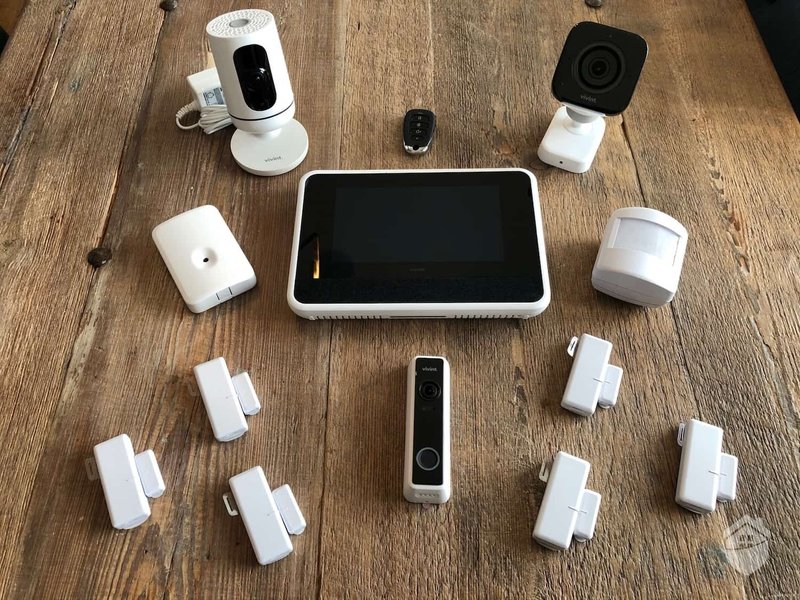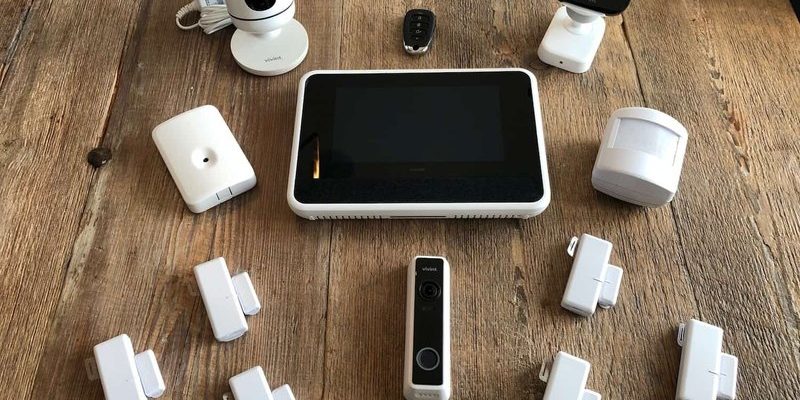
Here’s the thing: Vivint makes some of the most user-friendly remotes for controlling their home security and automation systems. But even smart tech needs a little TLC when it comes to syncing new gear. Maybe your remote won’t connect, or it starts ignoring certain commands. It’s not always about bad luck; most times, it’s something fixable—if you know what to look for. Let me walk you through what’s going on inside that little remote, how pairing works, and step-by-step fixes that can get you back to smooth, click-happy control.
Understanding Vivint Smart Remote Pairing
When you try to pair a Vivint smart remote with your home hub or another device, you’re basically asking two gadgets to “shake hands” and trust each other. If they don’t get that handshake right, things fall apart fast. The process usually involves putting the hub and the remote into pairing mode at just the right time, followed by some blinking lights or beeps as they swap codes and permissions.
Why does this matter? Well, your Vivint remote isn’t just sending an old-school IR signal like a universal TV remote. It’s using wireless protocols—sometimes Zigbee, Z-Wave, or proprietary code—so security is tighter and possibilities broader. But that makes the pairing process more sensitive to interruptions, interference, or mistakes. If you try to pair too quickly or miss a step, the devices often throw a tiny tantrum and refuse to sync.
Honestly, it helps to think of the remote and your hub like new coworkers meeting for the first time. If nobody says “hello” in the right way, things get awkward. That’s why the pairing process has to happen in a very specific order, and why getting it wrong leads to errors that can leave you scratching your head.
Common Pairing Errors With Vivint Smart Remote
You might be wondering: what’s the actual difference between a normal hiccup and a true pairing error? Here’s how to tell. A *pairing error* typically appears when you try to sync and the remote just won’t register, or shows a persistent blinking LED. Sometimes, you’ll hear a beep from the hub but nothing else happens. Other times, you get halfway through and then everything stops responding, like the system is ghosting you.
Some of the most common pairing problems include:
- Out-of-sync codes: The remote and hub aren’t sharing the same encryption or pairing code, which means they can’t communicate.
- Dead or weak batteries: Low power in the remote prevents it from broadcasting its pairing signal clearly.
- Too much wireless interference: If there are lots of other signals (WiFi, baby monitors, even microwaves), your remote’s signal can get lost in the noise.
- Wrong pairing mode: Either the remote or hub isn’t actually in the right mode when you try to sync.
Here’s a quick story: My friend tried to pair her Vivint remote right next to her home router and microwave, both blasting out signals. Of course, nothing worked until she moved to a quieter corner of her house. The remote paired instantly. Sometimes, it really is the simple things.
Step-by-Step: How to Reset and Re-Pair Your Vivint Smart Remote
If you’re stuck, don’t panic. Most pairing errors with Vivint smart remotes can be fixed with a good old-fashioned reset and a careful redo of the pairing steps. Let me explain the process in detail:
- Check the batteries in your remote first. Weak batteries are a surprisingly common problem. Pop in a fresh set if you’re not sure they’re good.
- Reset the remote. Most Vivint remotes have a tiny reset button or pinhole on the back. Use a paperclip or something similar, press and hold for about 10 seconds, and wait for the LED to blink rapidly. That’s the sign it’s ready for a clean start.
- Put your Vivint hub (or panel) into pairing mode. Usually, this means navigating through the touchscreen menu (‘Settings’ > ‘Devices’ > ‘Add Device’) until you see the option to pair a new remote.
- Activate pairing mode on the remote. This is sometimes automatic after a reset, but you might need to press and hold a specific button (usually ‘Pair’ or ‘Sync’) until the LED flashes.
- Wait for confirmation. The hub and remote should connect—a new code will be shared, and you’ll see a steady light or hear a beep. If nothing happens after 60 seconds, repeat the process.
You might be thinking: “Isn’t it risky to reset everything?” Don’t worry. Resetting only affects the pairing code, not your other settings or devices.
Why Your Vivint Remote Won’t Pair: Hidden Causes Explained
Now, let’s dig deeper. Sometimes, even after you follow all the steps, your Vivint smart remote simply refuses to pair. Why? There are a few less obvious culprits.
Firmware mismatches on the hub or remote can block successful pairing. If your remote is running an old version of its internal code—maybe it’s been in storage for a while, or you skipped a recent update—it might not “speak the same language” as your hub. Check Vivint’s instructions for updating firmware, or reach out to support if you’re not sure how.
Another sneaky problem: multiple pairing attempts without a reset in between. If you try to pair over and over without clearing out the old info, the remote can get confused. It’s kind of like calling someone repeatedly but forgetting to hang up between calls—the line gets tangled.
Finally, keep an eye out for hardware issues. Occasionally, physical damage (maybe you dropped the remote, or the battery contacts are corroded) can prevent proper syncing. Look for broken buttons, scratched contacts, or anything else that seems off.
Comparing Vivint Remotes With Universal Remotes
Here’s a question a lot of people have: “Why can’t I just use any old universal remote with Vivint?” It’s a fair thought. Universal remotes are everywhere, and they promise to work with dozens of brands. But Vivint’s smart remote is built specifically for their ecosystem. It runs on encrypted signals and code that a basic universal remote can’t mimic.
If you try to use a universal remote, it might work for simple IR commands (like turning on a basic Vivint camera monitor), but it won’t control advanced automation, security settings, or integrate with Vivint’s encrypted wireless network. In short, you lose most of the smart features—the stuff that makes Vivint worth the investment.
If you want to stick with Vivint’s security and automation, you really do need to use their branded remote. The bright side is, the troubleshooting here is built for their system and gives you more reliable control.
Tips to Avoid Pairing Problems in the Future
Once you’ve wrangled your Vivint smart remote back into sync, it’s worth taking a few steps to avoid future headaches. Here’s what I’ve found works best:
- Keep both your remote and hub firmware up to date. This prevents code mismatches and adds new features (or bug fixes).
- Replace remote batteries regularly. Even if the remote seems fine, weak batteries can cause random disconnects or slow syncing.
- Avoid wireless “hotspots.” Try not to pair right next to routers, microwaves, or other devices that crowd the airwaves.
- Document your pairing steps. Keep a quick note or snapshot of the process that works for you. Future-you will thank present-you.
Pairing problems can be frustrating, but most are preventable with a little care and attention to detail. Treat the remote like a finicky old radio; sometimes, all it needs is a patient hand.
When to Call Vivint Support for Remote Troubles
I’m all for DIY fixes, but sometimes a stubborn remote just won’t play nice. If you’ve tried everything above—fresh batteries, resets, careful pairing mode—and things still won’t pair, it’s time to reach out to Vivint’s support.
Vivint’s tech team can walk you through advanced troubleshooting steps or even check if there’s a deeper system fault. If your remote is under warranty, a replacement might be the next step. Just make sure you’ve already attempted a full reset and fresh pairing—support will ask you to do these anyway.
And don’t worry about feeling silly. Remote pairing errors happen to seasoned smart home users all the time. Getting help early often saves hours of guesswork.
Final Thoughts: Getting the Most Out of Your Vivint Smart Remote
Pairing errors with the Vivint smart remote can feel like a riddle with no answer—at least, until you break the process down and tackle it step by step. Most issues come down to simple mistakes, like weak batteries or missed reset steps. Others are hidden, like code mismatches or too much interference.
Remember, the Vivint remote is powerful because it’s secure and tightly integrated into your home system. That’s why it needs a little extra care during pairing. Take your time, follow the reset and sync instructions, and don’t be afraid to ask for help if something still seems off. Before long, you’ll be back to controlling your home with a click—no stubborn blinking lights in sight.
